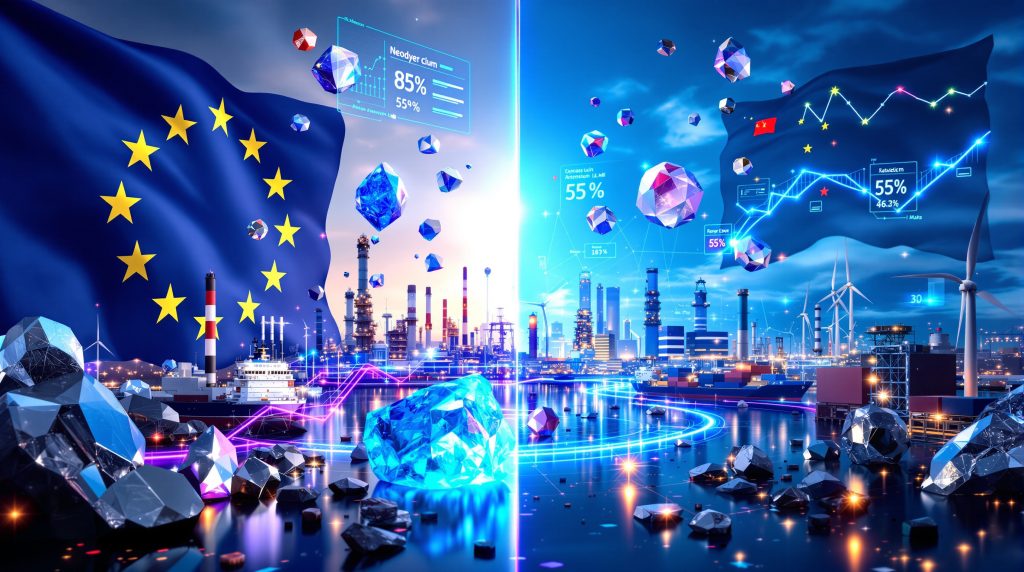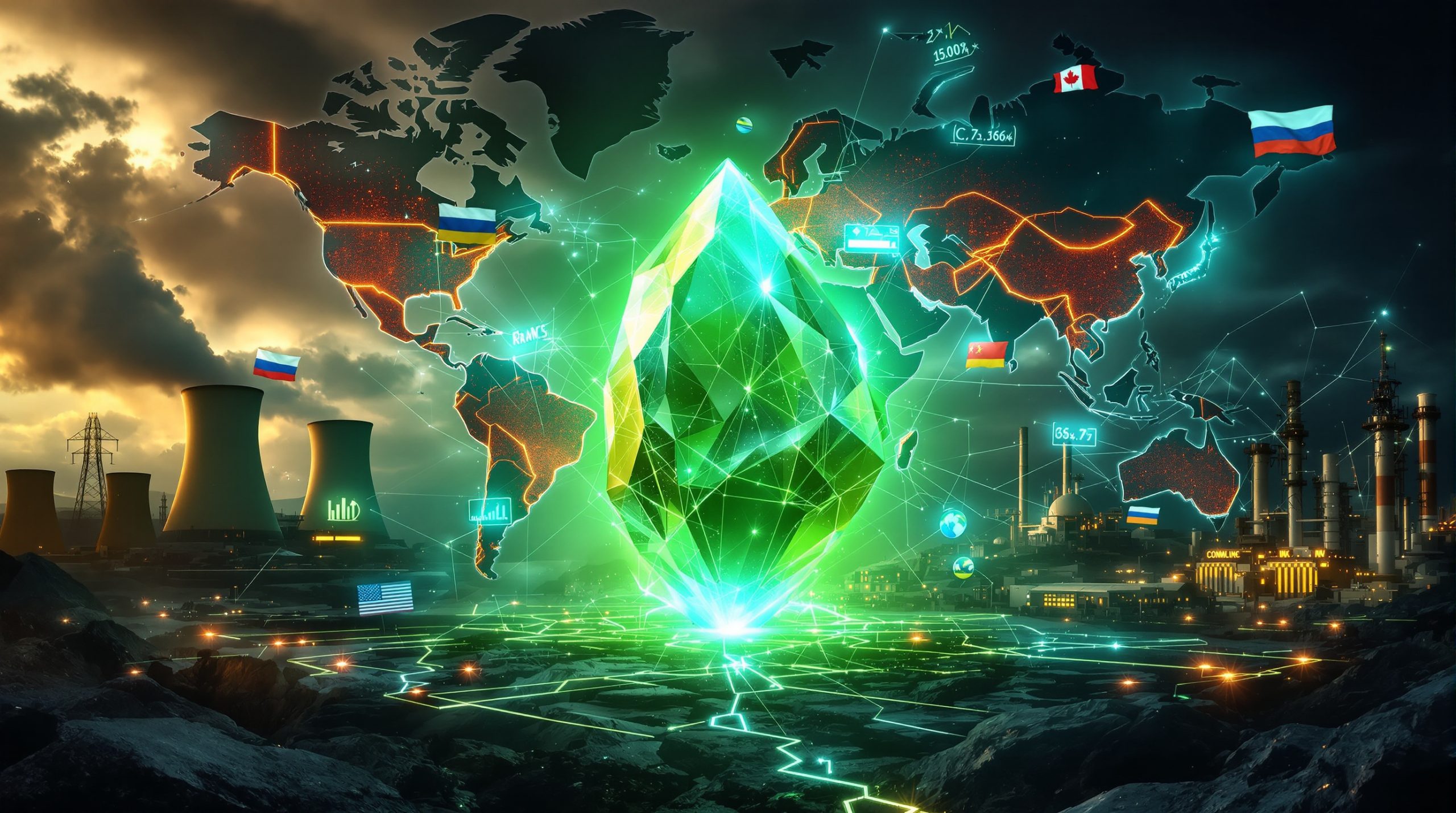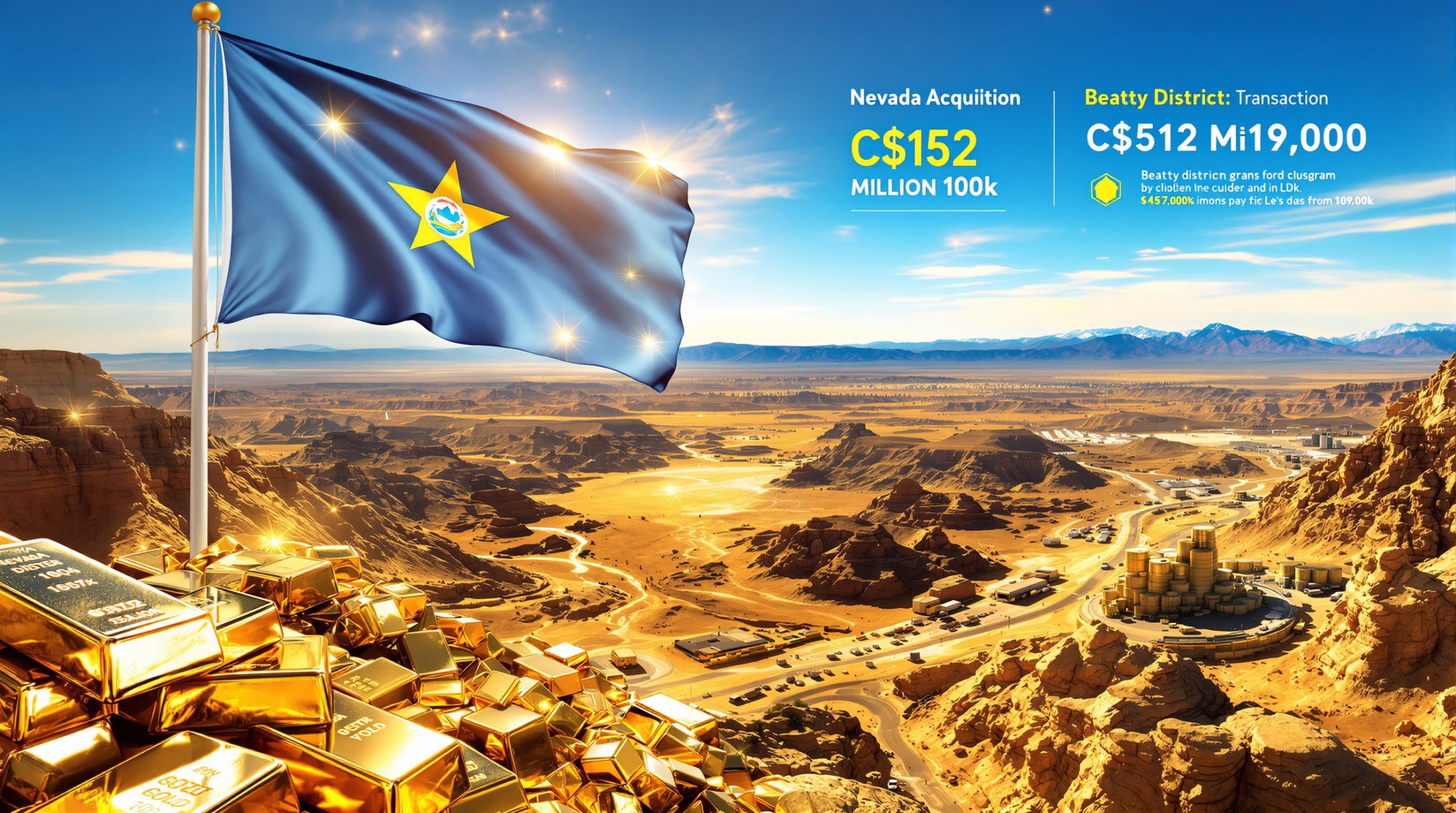Understanding the Current Crisis in Critical Mineral Diplomacy
The escalating dispute between the European Union and China over rare earth element export restrictions has emerged as one of the most significant trade challenges of 2025. This diplomatic standoff centres on Beijing's expanded export controls affecting multiple critical minerals, creating widespread disruptions across European manufacturing sectors while forcing both sides into urgent negotiations to prevent further economic damage.
The crisis highlights the vulnerability of global supply chains dependent on Chinese rare earth processing capabilities, which dominate international markets through decades of strategic investment and technological development. European manufacturers now face production delays and licensing bottlenecks that threaten everything from automotive production to renewable energy equipment manufacturing.
What Triggered the Latest EU-China Rare Earth Standoff?
China's implementation of comprehensive export restrictions in October 2025 marked a significant escalation in the use of rare earth elements as economic leverage. These measures extended beyond traditional licensing requirements to encompass processing equipment and associated technologies, demonstrating Beijing's sophisticated understanding of Western manufacturing dependencies.
The restrictions target critical materials essential for high-tech applications, including permanent magnets used in electric vehicles, wind turbines, and advanced electronics. This strategic approach maximises economic impact on European industries while maintaining regulatory justifications under national security provisions. Furthermore, this development aligns with broader trends in the critical minerals energy transition affecting global supply chains.
Industrial Impact Cascade Effects
Manufacturing disruptions have rippled across multiple EU sectors, with automotive and machinery industries experiencing the most severe shortages. The automotive sector faces particular challenges as rare earth elements are essential for:
- Electric vehicle motor components requiring high-performance permanent magnets
- Advanced driver assistance systems utilising specialised sensors
- Hybrid powertrain technologies dependent on rare earth-based materials
- Electronic control units requiring precise magnetic properties
European Trade Commissioner Maros Sefcovic noted that automotive and machinery sectors face the greatest impact from these restrictions, highlighting the concentrated vulnerability of key industrial segments.
Licensing Bottleneck Statistics
The scale of the licensing crisis reveals the extent of European dependence on Chinese rare earth supplies:
| Metric | Value |
|---|---|
| Priority application lists submitted | 8 |
| Total export licenses pending | 2,000+ |
| Applications properly addressed | Just over 55% |
| Industries most affected | Automotive, machinery |
How Are EU Trade Officials Responding to China's Restrictions?
European officials have pursued diplomatic engagement over retaliatory measures, recognising the complex interdependencies that characterise rare earth supply chains. Commissioner Sefcovic's direct outreach to Chinese Commerce Minister Wang Wentao demonstrates the EU's commitment to finding negotiated solutions rather than escalating trade tensions.
High-Level Diplomatic Engagement
The nearly two-hour ministerial call between Sefcovic and Wang established the framework for face-to-face negotiations in Brussels. This diplomatic approach emphasises de-escalation while maintaining firm positions on trade fairness and supply chain reliability. Both officials characterised the discussions as constructive, suggesting potential pathways toward resolution.
The upgraded export control dialogue mechanism, established following the July 2025 EU-China summit, provides the institutional framework for these negotiations. This structured approach allows both parties to address technical concerns while maintaining political momentum toward practical solutions.
Strategic Communication Approach
Sefcovic's public statements emphasised that the EU had no interest in escalation, whilst simultaneously characterising China's restrictions as harmful and casting shadows over bilateral relations. This balanced messaging signals European willingness to negotiate while maintaining pressure for prompt resolution.
The commitment to intensify bilateral contacts through established dialogue mechanisms demonstrates both sides' recognition that sustained engagement is necessary for managing complex trade interdependencies in critical mineral sectors. However, the European CRM facility initiatives show Europe's growing focus on domestic capabilities.
Which Industries Face the Greatest Supply Chain Vulnerabilities?
European manufacturing sectors exhibit varying degrees of vulnerability to rare earth supply disruptions, with some industries facing immediate production impacts while others experience longer-term strategic challenges.
Automotive Sector Dependencies
The automotive industry's transition toward electrification has created acute dependencies on rare earth elements, particularly for permanent magnets in electric motors and hybrid systems. European manufacturers report significant disruptions in production schedules as rare earth shortages affect:
- Electric vehicle production: Critical permanent magnets requiring neodymium and dysprosium
- Hybrid powertrains: Complex systems integrating multiple rare earth-dependent components
- Advanced electronics: Driver assistance systems utilising specialised sensors and processors
The concentration of European automotive production in specific geographic regions amplifies these vulnerabilities, as supply chain disruptions cascade through interconnected manufacturing networks.
Machinery and Industrial Equipment Challenges
Heavy machinery producers across the EU face delays in fulfilling orders for wind turbines, industrial robots, and precision manufacturing equipment. These disruptions particularly impact:
- Wind energy systems: Large permanent magnets requiring substantial rare earth inputs
- Industrial automation: High-precision motors demanding consistent magnetic properties
- Manufacturing equipment: Advanced machinery incorporating rare earth-based components
Technology and Defence Intersections
The Nexperia case illustrates the intersection between commercial technology and national security concerns. The Dutch government's seizure of this China-owned computer chipmaker highlights concerns about technology transfer while demonstrating how rare earth restrictions intersect with broader geopolitical tensions.
Commissioner Sefcovic's direct engagement with Dutch business ministers regarding Nexperia shows how individual company situations become part of larger diplomatic negotiations over critical mineral access. Moreover, the US critical minerals order demonstrates similar concerns across allied nations.
What Economic Leverage Does China Hold in Rare Earth Markets?
China's dominance in rare earth markets extends far beyond mining operations to encompass the entire value chain from extraction through refined materials and finished components. This comprehensive control creates multiple pressure points that Beijing can activate for economic and political leverage.
Processing Infrastructure Dominance
Chinese rare earth processing capabilities represent decades of strategic investment in refining, separation, and value-added manufacturing. This infrastructure advantage creates bottlenecks that are difficult for other countries to replicate quickly, even when alternative raw material sources are available.
The complexity of rare earth processing requires specialised facilities, environmental management systems, and technical expertise that China has developed through sustained government support and private sector investment. Alternative suppliers often lack these downstream capabilities, limiting their ability to provide immediate substitution for Chinese materials.
Strategic Resource Management
Beijing's approach to rare earth export controls demonstrates sophisticated understanding of supply chain vulnerabilities in Western economies. By targeting specific processing stages and licensing requirements, Chinese authorities can maximise economic impact while maintaining regulatory justifications.
The selective nature of these restrictions allows China to maintain supply relationships with some customers while pressuring others, creating divisions among importing countries and complicating coordinated responses.
How Are European Companies Adapting to Supply Chain Disruptions?
European manufacturers are implementing multiple strategies to reduce their vulnerability to Chinese rare earth supply disruptions, though these adaptations require significant time and capital investments to achieve meaningful results.
Diversification and Alternative Sourcing
Companies are accelerating efforts to identify suppliers outside China, including partnerships with Australian, Canadian, and African rare earth producers. However, these alternatives often lack the processing infrastructure necessary for immediate substitution, creating gaps between raw material availability and refined product supply.
The development of alternative supply chains requires substantial investment in:
- Processing facilities: Building refining capacity outside China
- Technical expertise: Developing specialised knowledge for rare earth separation
- Quality assurance: Ensuring consistent material properties for demanding applications
- Logistics networks: Establishing reliable transportation and storage systems
Risk Management Strategies
European manufacturers are extending inventory holding periods and implementing more sophisticated supply chain risk assessment protocols. This approach increases working capital requirements but provides greater resilience against future disruptions.
Companies are also exploring technological alternatives, including:
- Recycling technologies: Recovering rare earths from end-of-life products
- Material substitution: Developing alternatives with reduced rare earth content
- Efficiency improvements: Reducing rare earth requirements through design optimisation
What Role Do Other Global Players Have in This Dispute?
The EU-China rare earth dispute occurs within a broader context of great power competition and strategic resource security, with multiple countries positioning themselves as alternative suppliers while coordinating responses to Chinese export restrictions.
Allied Coordination Mechanisms
The European Union has coordinated response strategies with G7 partners, ensuring aligned approaches to addressing Chinese export restrictions. This multilateral coordination strengthens negotiating positions while avoiding unilateral escalation that could fragment international responses.
Furthermore, other countries are developing their own strategies. For instance, Australia's strategic reserve programme demonstrates how allied nations are building resilience against supply chain vulnerabilities.
Alternative Supplier Development
Countries including Australia, Canada, and the United States are positioning themselves as alternative rare earth suppliers, though significant infrastructure development remains necessary to challenge Chinese processing dominance.
Key alternative supplier initiatives include:
- Australia: Expanding mining operations and developing domestic processing capabilities
- Canada: Leveraging existing mining expertise and strategic mineral reserves
- United States: Rebuilding rare earth processing infrastructure through government incentives
- African producers: Developing new mining projects with international partnership support
How Might These Negotiations Reshape Future Trade Relations?
The outcome of EU-China rare earth negotiations will establish important precedents for resolving critical mineral trade disputes through diplomatic channels rather than retaliatory measures, with implications extending across multiple sectors and trading relationships.
Precedent Setting Implications
Success in diplomatic resolution could provide frameworks for addressing similar conflicts in other strategic materials, including lithium, cobalt, and other battery metals essential for energy transition technologies. The negotiation approach demonstrates potential effectiveness of structured dialogue over economic warfare.
The establishment of regular consultation mechanisms and transparency requirements could become models for managing resource-related trade disputes in an increasingly multipolar world economy. Additionally, countries are reevaluating their overall critical minerals strategy in response to these developments.
Supply Chain Resilience Evolution
Both European and Chinese negotiators recognise the importance of maintaining stable supply chains for global economic stability. The discussions may result in new frameworks balancing national security interests with international trade obligations.
These negotiations could establish:
- Emergency supply provisions: Ensuring critical material access during disputes
- Transparency mechanisms: Providing visibility into export control decision-making
- Dispute resolution procedures: Creating structured processes for addressing conflicts
- Supply chain stability measures: Reducing volatility through predictable trade rules
What Are the Potential Outcomes of the Brussels Meetings?
The scheduled Brussels meetings between European and Chinese officials represent a critical juncture in determining whether diplomatic engagement can resolve rare earth trade tensions or whether the dispute will escalate into broader economic confrontation.
Immediate Relief Scenarios
Successful negotiations could result in expedited processing of the over 2,000 pending export licence applications that European companies have submitted. This would provide short-term relief for affected industries while establishing improved procedures for future licensing requests.
The meetings might also clarify regulatory requirements and provide greater predictability for European companies seeking to maintain rare earth supply relationships with Chinese suppliers. According to Reuters reporting, these discussions represent the highest-level engagement between the two sides since the restrictions were implemented.
Comprehensive Agreement Framework
More ambitious outcomes could establish new frameworks for critical mineral trade, including:
- Streamlined licensing procedures: Reducing bureaucratic delays for legitimate commercial applications
- Regular bilateral consultations: Creating ongoing dialogue mechanisms to prevent future disputes
- Technical cooperation: Sharing expertise on sustainable rare earth production and processing
- Strategic stability measures: Ensuring critical material access during political tensions
Both Sefcovic and Wang expressed commitment to working toward practical agreements, suggesting potential for substantive outcomes rather than merely symbolic diplomatic engagement.
How Are These Tensions Affecting Global Critical Mineral Markets?
The EU-China rare earth dispute has generated significant market volatility and investment flow redirections as companies and governments reassess their exposure to supply chain concentration risks.
Price Volatility and Market Psychology
Rare earth prices have experienced substantial fluctuations as markets react to supply uncertainty and geopolitical tensions. This volatility affects downstream industries and complicates long-term planning for technology companies that require predictable input costs for product development.
Market psychology reflects growing awareness of supply chain vulnerabilities, with investors increasingly pricing geopolitical risks into rare earth-dependent sectors including electric vehicles, renewable energy, and advanced electronics.
Investment Flow Redirections
Capital investment is flowing toward non-Chinese rare earth projects despite higher development costs and longer timelines. This shift reflects institutional investor recognition of supply chain concentration risks and government policies supporting domestic critical mineral capabilities.
Key investment trends include:
- Mining project acceleration: Expedited development of rare earth deposits outside China
- Processing facility construction: Building refining capacity in multiple countries
- Recycling technology advancement: Developing cost-effective rare earth recovery systems
- Research and development: Investing in alternative materials and efficiency improvements
Strategic Reserve Considerations
Governments worldwide are reassessing strategic mineral reserve policies, with some considering mandatory stockpiling requirements for materials critical to defence and energy transition applications. These policy developments create additional demand for rare earth elements while potentially stabilising markets through government purchases.
What Lessons Can Other Countries Learn from This Dispute?
The EU-China rare earth crisis provides valuable insights for countries seeking to balance economic efficiency with supply chain security, particularly regarding strategic materials essential for national economic competitiveness.
Supply Chain Diversification Imperative
The crisis demonstrates the risks of excessive dependence on single-country suppliers for critical materials, regardless of short-term cost advantages. Countries must develop diversified sourcing strategies that may sacrifice some economic efficiency for greater supply security.
Key diversification strategies include:
- Multi-source procurement: Avoiding single supplier dependencies
- Domestic processing development: Building strategic capabilities even at higher costs
- Alliance coordination: Sharing supply chain risks among trusted partners
- Technology development: Reducing dependence through innovation and substitution
Diplomatic Engagement Value
The EU's emphasis on dialogue over retaliation demonstrates the potential effectiveness of diplomatic approaches to trade disputes, particularly in sectors with complex interdependencies where escalation could harm all parties.
This approach requires sustained political commitment and institutional frameworks that can maintain dialogue during periods of broader political tension. As Politico reports, the European Commission is simultaneously pursuing stockpiling initiatives whilst maintaining diplomatic channels.
Long-term Strategic Planning Requirements
Countries must balance short-term economic efficiency with long-term supply security through sophisticated analysis of geopolitical risks and strategic vulnerabilities. This requires government capabilities that can assess complex interdependencies and guide policy responses.
Navigating Critical Mineral Diplomacy in a Multipolar World
The EU and China rare earth trade discussions represent a pivotal moment in international economic relations, with implications extending far beyond bilateral trade relationships. The crisis has accelerated fundamental changes in how nations approach critical mineral security, supply chain resilience, and economic diplomacy.
Success in these negotiations could establish new models for managing resource-related trade disputes through diplomatic engagement rather than economic warfare. The structured dialogue approach, built on existing institutional frameworks from the July 2025 summit, demonstrates how sustained diplomatic engagement can address complex technical and political issues simultaneously.
However, regardless of immediate outcomes, this crisis has permanently altered global supply chain strategies. European manufacturers are implementing diversification plans that will reduce Chinese dependencies over time, while governments worldwide are reassessing their approaches to strategic resource security. These developments underscore the growing intersection between economic policy, national security, and international diplomacy in the modern global economy.
The automotive, technology, and renewable energy sectors will continue adapting to supply chain uncertainties while governments develop more sophisticated approaches to managing critical mineral dependencies. The resolution of this dispute will influence how future resource conflicts are managed and whether diplomatic solutions can prevail over economic nationalism in an increasingly complex international system.
"The European Commission calls for no escalation with China over rare earths," as Euronews reported, highlighting the EU's continued commitment to diplomatic resolution despite mounting economic pressures.
Disclaimer: This analysis incorporates information available as of late 2025. Rare earth markets, trade policies, and diplomatic negotiations remain subject to rapid changes that may affect the accuracy of forward-looking assessments. Readers should consult current government announcements and market data for the most recent developments in EU and China rare earth trade discussions and critical mineral supply chains.
Ready to Capitalise on Critical Mineral Market Volatility?
As rare earth trade tensions reshape global supply chains and create significant market opportunities, Discovery Alert's proprietary Discovery IQ model delivers real-time alerts on critical mineral discoveries across the ASX, helping investors identify actionable opportunities ahead of broader market movements. Explore major mineral discoveries that have generated substantial returns throughout history and begin your 30-day free trial today to position yourself strategically in this evolving landscape.




